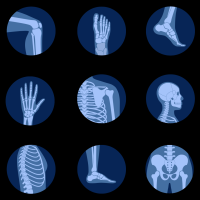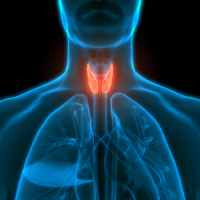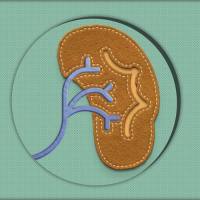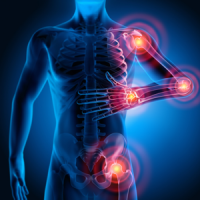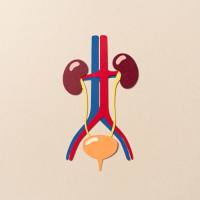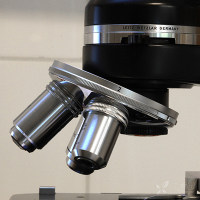心脏与心血管系统领域热点内容分享(上)|Wiley期刊 ANE 2021年第六期

Annals of Noninvasive Electrocardiology (ANE)是Wiley旗下心脏与心血管系统领域的开放获取医学期刊, 2020年影响因子1.468。ANE也是国际动态心电图与无创心电图学会(ISHNE)的官方出版物,关注传统和创新的心电图技术在诊断和治疗心脏病患者方面的临床应用和技术进展。ANE 2021年第六期已于近日上线,共包含14篇文章,点击此处欢迎读者免费下载阅读。
文章列表:
1. Spectrum of clinical applications of interlead ECG heterogeneity assessment: From myocardial ischemia detection to sudden cardiac death risk stratification
Heterogeneity in depolarization and repolarization among regions of cardiac cells has long been recognized as a major factor in cardiac arrhythmogenesis. This fundamental principle has motivated development of noninvasive techniques for quantification of heterogeneity using the surface electrocardiogram (ECG). The initial approaches focused on interval analysis such as interlead QT dispersion and Tpeak–Tend difference.

2. Electrocardiographic predictors of early recurrence of atrial fibrillation
Electrical cardioversion (ECV) is an effective method for restoring sinus rhythm after atrial fibrillation (AF). However, early recurrence of AF occurs in a significant number of patients after ECV. This study aimed to identify electrocardiographic (ECG) predictors of early AF recurrence after ECV.
A longer PWD (>134 ms) and a larger PTF (>50 ms × mm) were useful predictors of early recurrence of AF after successful ECV in clinical practice. A more effective rhythm control therapy such as catheter ablation or rate control strategy rather than a repeat ECV should be considered.

3. Assessment of ECG during hybrid comprehensive telerehabilitation in heart failure patients—Subanalysis of the Telerehabilitation in Heart Failure Patients (TELEREH-HF) randomized clinical trial
Exercise training in heart failure (HF) patients should be monitored to ensure patients’ safety. Electrocardiographic (ECG) telemonitoring was used to assess the safety of hybrid comprehensive telerehabilitation (HCTR).
Telerehabilitation in HF patients was safe without the evidence for symptomatic arrhythmias requiring discontinuation of telerehabilitation. Only one mildly symptomatic paroxysmal AF episode led to the short-term suspension of the training program. The most common arrhythmias were atrial and ventricular premature beats. These arrhythmias did not result in any changes in rehabilitation and therapy regimens.

4. Clinical utility of 12-lead electrocardiogram in evaluating heart disease in patients with muscular dystrophy: Assessment of left ventricular hypertrophy, conduction disease, and cardiomyopathy
Heart disease remains a leading cause of mortality in patients with muscular dystrophy (MD), and cardiac assessment by standard imaging modalities is challenging due to the prominence of physical limitations.
The identification of LBBB and fQRS was linked to cardiomyopathy in patients with MD, while ECG-LVH was of limited utility. Importantly, these findings can be applied to effectively screen a broad cohort of MD patients for structural heart disease and prompt further evaluation and therapeutic intervention.

5. Visceral fat level correction of the left ventricular hypertrophy electrocardiographic criteria
Left ventricular hypertrophy (LVH) is a well-known risk factor for cardiovascular events. Even though there are many electrocardiographic (ECG) criteria for LVH, they still provide poor performance, especially among obese patients. The aim of this study was to examine whether adding visceral fat to ECG LVH criteria improves accuracy in the diagnosis.
Adjusting ECG indexes to BMI or VFATL improves the sensitivity of LVH detection. VFATL-corrected indexes are more sufficiently than BMI-corrected. After advancements in indexes, both lean and morbidly obese individuals outcomes show a greater prevalence of correct LVH diagnosis.

6. Higher FT4 level within the normal range predicts the outcome of cryoballoon ablation in paroxysmal atrial fibrillation patients without structural heart disease
Accumulated evidence has indicated that a high-normal FT4 level is an independent risk factor for the clinical progression of AF. However, the association between elevated FT4 concentration within the normal range and AF recurrence after cryoballoon ablation in China is unknown.
Higher FT4 level within the normal range predicted the outcome of cryoballoon ablation in Chinese paroxysmal AF patients without structural heart disease.

7. Role of fragmented QRS and Shanghai score system in recurrence of ventricular fibrillation in patients with early repolarization syndrome
The Shanghai Score System, which weighs electrocardiogram (ECG) findings reflecting repolarization abnormalities, has been proposed for diagnosis of early repolarization syndrome (ERS). However, recent studies have suggested the involvement of depolarization abnormalities in some ERS patients. The aim of this study was to validate the Shanghai Score System in predicting the recurrence of ventricular fibrillation (VF) in ERS patients. The predictive value of fragmented QRS (fQRS) was also investigated.
The present study demonstrated that the Shanghai Score System could effectively identify ERS patients at high risk for VF recurrence. The results also suggested that the presence of fQRS, a marker of depolarization abnormalities, may be useful for predicting VF recurrence in ERS patients.







